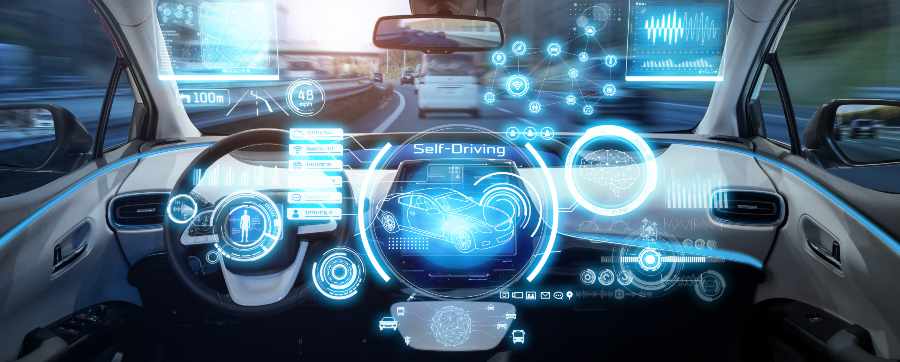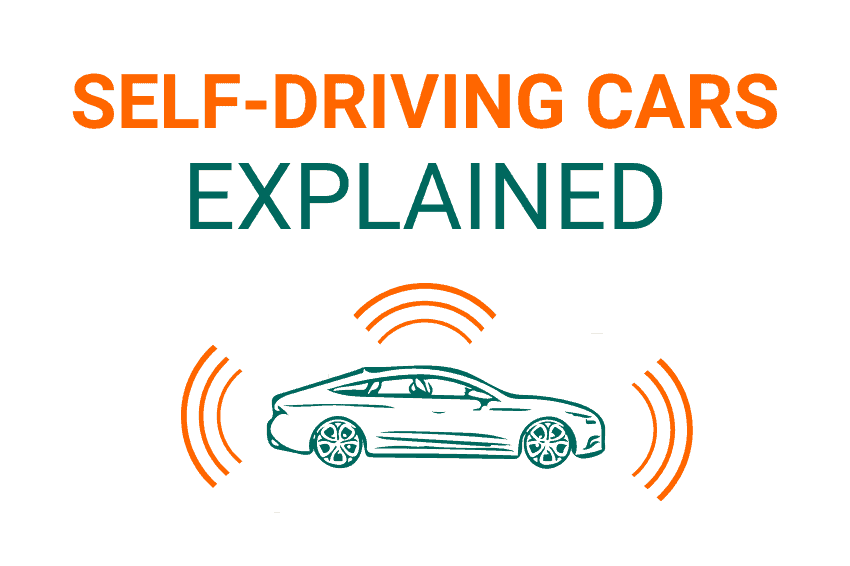Autonomous technology, artificial intelligence, self-driving cars and robot vehicles are probably all terms you have come across in your lifetime. Whether you read it in an article, saw it in an 80s sci-fi film or have experienced it first-hand in a Tesla, the idea of self-driving cars is seeping more and more into our reality every day.
Experiments on autonomous cars began in the 1930s. The first model vehicle to welcome autonomous technology was also built in the 1930s. Guided by a controller, this electric model moved via sensors and wires embedded in the road to guide it.
Interested in how the future of autonomous technology will change driving forever? Keep on reading.
How do self-driving cars work?
Self-driving cars work by making a map of their surroundings which they can see through sensors placed on various parts of a car. This includes radar sensors that scan nearby vehicles and pedestrians, and video cameras that read road signs, traffic lights, and again other vehicles and pedestrians.
It also uses light detection sensors to measure distance and identify road edges and lane markings. Wheels detect curbs and other vehicles when parking thanks to ultrasonic sensors.
Autonomous software then processes all this information and communicates it to the vehicle’s acceleration, braking, and steering system.

What are the levels of autonomous driving?
- Driver Assist – Steering and braking can be autonomous, but the driver must be ready to take control
- Partial Assistance – Steering and speed in unison can be controlled by a computer, but the driver must still be engaged and monitor the surroundings and be ready to take over when needed at any point
- Conditioning Assistance – The car can monitor its surroundings, can control braking and steering in certain conditions, the driver must monitor the situation at lower levels and should take control if needed
- High automation – The car can drive itself but must have a human inside, it can start, drive, monitor its surroundings and park in some environments. The driver can choose a fully autonomous option and relax in the car, however, if the vehicle needs assistance it will request help from the driver and will continue driving if ignored.
- Full automation – The car does not need any human control, it is capable of completing all driving tasks in all environments and conditions, it understands all scenarios including traffic jams and collisions. It also does not need any pedals or a steering wheel.
Are self-driving cars safe?
Self-driving cars have the potential to do some amazing things like improving our day-to-day safety on the roads. But there are two sides to see here.
Yes, it can and has gone wrong and allowed serious fatalities.
But it has also saved a number of lives. There has been thorough research about how human error is in fact worse than computer error.
One case in Norway happened where an intoxicated driver became unconscious whilst behind the wheel. His Tesla recognised he wasn’t driving and slowly brought the vehicle to a halt, saving him from a potentially fatal accident.

So, using this clever tech, could human conditions such as drunk driving, fatigue and distraction be conquered by self-driving cars? Let us know in the comments below!
Another plus is that autonomous cars have the ability to see better than the human eye can, as weather conditions such as fog doesn’t defeat the technology’s laser vision to see and perform driving tasks.
Is insurance more expensive for autonomous cars?
Until fully self-driving cars are legal in the UK, the cost of how much it will cost to insure them is a bit of a guessing game.
It really just depends on how likely self-driving cars are to cause accidents on the roads. If, as promised by many brands, autonomous cars will provide safer drivers and fewer accidents, then it’s very likely that the cost of insurance will be massively reduced.
If this happens, then insurance companies could reward owners with a decrease in their premiums. However, this is just a guess for now.
A statement by the Association of British Insurers said it is 100% committed to supporting the development of automated vehicles. So, the future of insurance is looking good for self-driving vehicles.
Why do we need self-driving cars?
Self-driving cars have the potential to reshape our world in a plethora of positive ways. It’s been found that traffic jams have been linked to road accidents and poor road safety. Autonomous technology has the opportunity to reduce traffic congestion in cities and on motorways, improving safety for everyone.
Improved levels of congestion mean there is likely to be a lower number of severe accidents on the roads.
Another possibility that this technology could achieve is driving more efficiently. If we are coding a computer to drive, then it’s likely it will be able to drive a lot better and smoother without any human emotion or error.

There could even be an exclusive lane on motorways just for self-driving vehicles. This could further help with efficiency and speed overall.
Autonomous driving also introduces improved accessibility for vulnerable passengers such as children, the elderly, people with disabilities, and more.
What are the ethical issues related to self-driving cars?
Want to own a fully autonomous car? Well, just like with your mobile phone, smart TV, Alexa and GPS device, you will need to accept that when you’re using your self-driving car your information is being tracked and watched.
This isn’t part of a conspiracy theory about the Government stalking you or big brother watching your every step. The reality is, if you’re asking a car to take you somewhere without you doing anything, it’s going to need to track your location to be able to do the job.
So, in terms of your personal data, your self-driving car will need access to it to work. Unless you agree to it, it will not use or pass on your data without your consent.
There have been issues raised, however, in relation to the moral minefield of autonomous cars.
What happens if the car is about to hit another car so it’ll need to swerve away, but by doing so it will hit a group of children on the side of the road? Which direction should the car choose?
This will ultimately come down to the coding in how the computer will make this decision in just a split second, which, as you can imagine, invites a lot of complexity into what the right course of action is for each and every moral scenario.
When will self-driving cars be available?
Autonomous technology is integrated into today’s vehicles. Cars that are fully capable of self-driving, however, are not yet available on the roads or are legal to drive in the UK.
If we think back to around 10 years ago, cars could not park themselves. Whereas there is technology today that enables cars to do this.
If we imagine 10 years ahead from now, it’s very likely that we will see many of the major manufacturing brands offering fully autonomous cars.
What about when self-driving cars become mainstream? We can only guess, but this could happen by 2050. When there is enough evidence that autonomous technology radically improves safety on the roads, only then will it become the norm of driving.

